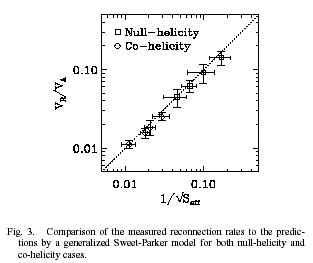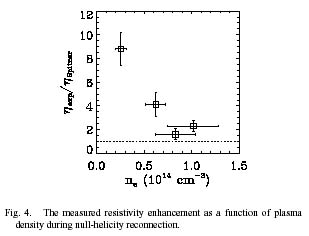Study of Local Reconnection Physics in a Laboratory Plasma
A short review of physics results obtained in the Magnetic Reconnection Experiment (MRX) is given with an emphasis on the local features of magnetic reconnection in a controlled environment. Stable two-dimensional (2D) current sheets are formed and sustained by induction using two internal coils. The observed reconnection rates are found to be quantitatively consistent with a generalized Sweet-Parker model which incorporates compressibility, unbalanced upstream-downstream pressure, and the effective resistivity. The latter is significantly enhanced over its classical values in the low collisionality regime. Strong local ion heating is measured by an optical probe during the reconnection process, and at least half of the increased ion energy must be due to nonclassical processes, consistent with the resistivity enhancement. Characteristics of high frequency electrostatic and electromagnetic fluctuations detected in the current sheet suggest presence of the lower-hybrid-drift like waves with significant magnetic components. The detailed structures of current sheet are measured and compared with Harris theory and two-fluid theory.

